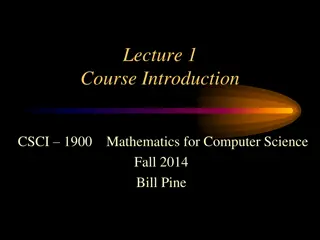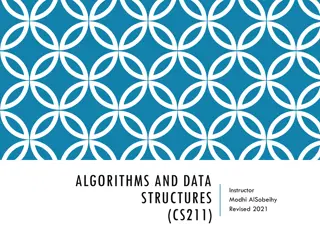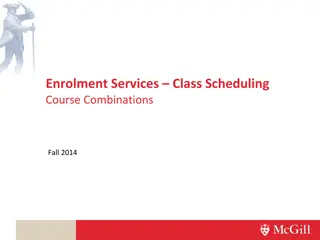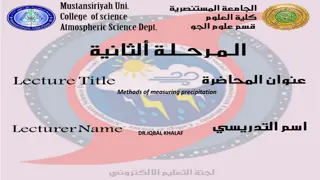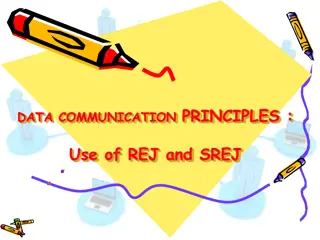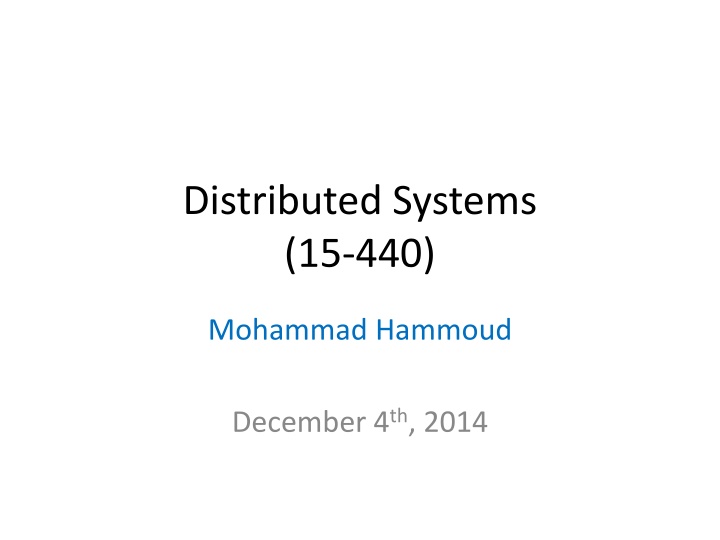
Comprehensive Understanding of Distributed Systems in Modern Applications
Explore the intricacies of distributed systems through a hands-on approach, covering topics like architectures, communications, synchronization, fault tolerance, and more.
Download Presentation

Please find below an Image/Link to download the presentation.
The content on the website is provided AS IS for your information and personal use only. It may not be sold, licensed, or shared on other websites without obtaining consent from the author. If you encounter any issues during the download, it is possible that the publisher has removed the file from their server.
You are allowed to download the files provided on this website for personal or commercial use, subject to the condition that they are used lawfully. All files are the property of their respective owners.
The content on the website is provided AS IS for your information and personal use only. It may not be sold, licensed, or shared on other websites without obtaining consent from the author.
E N D
Presentation Transcript
Distributed Systems (15-440) Mohammad Hammoud December 4th, 2014
Course Objectives The course aims at providing an in- depth and hands-on understanding on How modern distributed systems meet the demands of contemporary distributed applications Distributed system programming models and analytics engines Principles on which distributed systems are optimized Principles on which distributed systems are based
List of Topics Considered: a reasonably critical and comprehensive understanding. Thoughtful: Fluent, flexible and efficient understanding. .1. Masterful: a powerful and illuminating understanding. Architectures and Communications .2. Naming .3. Synchronization .4. Consistency and Replication .5. Fault Tolerance .6. Programming Models .7. Distributed File Systems .8. Cloud Computing & Virtualization
Course Content Course Overview and Introduction (2 Lectures): Why distributed systems? Defining distributed systems Course overview and intended learning outcomes Trends in distributed systems High performance platforms Mobile and ubiquities computing Cloud computing Etc., Challenges in designing distributed systems Heterogeneity, openness, security, scalability, reliability, concurrency, transparency and quality of service
Course Content Architectural Models (1 Lecture): Client-server, peer-to-peer, tiered and layered architectures Networking (1 Lecture): Types of networks Networking principles: Packet transmission Network Layers (Physical, data-link, network and transport layers) Congestion control
Course Content Communication Paradigms (1 Lecture): Socket communication TCP and UDP sockets Remote invocation RPC and RMI Indirect communication Message-queuing, publish-subscribe, and group communication systems
Course Content Naming (2 Lectures): Flat naming Broadcasting, forwarding pointers, home-based naming, and distributed hash tables Structured naming Hierarchical name spaces, name resolution, linking and mounting Attribute-based naming LDAP and RDF
Course Content Synchronization (3 Lectures): Time synchronization Physical clocks (UTC, Cristian & Berkeley Algorithms and Network Time Protocol) Logical clocks (Lamport and vector clocks) Distributed Mutual Exclusion Permission-based Token-based Election Algorithms Bully and Ring algorithms
Course Content Consistency and Replication (3 Lectures): Data-Centric Consistency Models: Continuous, Sequential and Causal Models Client-Centric Consistency Models: Eventual consistency and client consistency guarantees Replica Management: Server and content replication and placement strategies Consistency Protocols: Primary-based, replicated-write and cache coherence protocols
Course Content Distributed Programming Models (4 Lectures): Classical programming models Shared-memory and message-passing models MPI Library Point-to-point and group communication routines Hadoop MapReduce, Google s Pregel and CMU s GraphLab The parallelism models The programming models The architectural models The computational models Task/Vertex/Job scheduling Distributed application suitability
Course Content Fault-Tolerance (3 Lectures) Failure models Crash, omission, timing, response and byzantine models Process resilience and agreement protocols Lamport s agreement protocol Reliable communication Request-reply reliable communication (Request-reply call semantics) Group reliable communication (Virtual synchrony and atomic multicasting) Recovery (Checkpointing and message-logging)
Course Content Distributed File Systems (2 Lectures): DFS Aspects: Architectures (Client-server, cluster-based, and symmetric architectures) Processes (Stateless vs. state-full processes) Communication Naming Synchronization Consistency and replication Fault-tolerance
Course Content Cloud Computing & Virtualization (1 Lecture): The cloud Model 6 Qualities (e.g., pay-as-you-go and elasticity) 3 Deployment Models (i.e., public, private and hybrid) 3 Service Models (i.e., SaaS, PaaS and IaaS) Why Virtualization in distributed systems? Virtualization types Full virtualization vs. para-virtualization Virtual machine types Process VMs vs. system VMs



